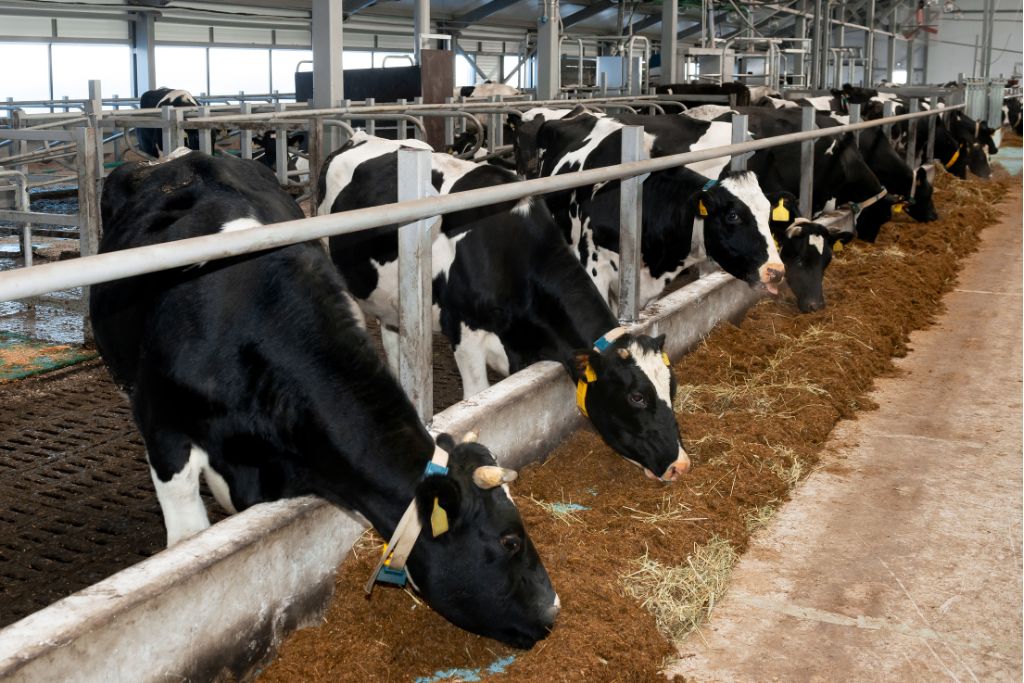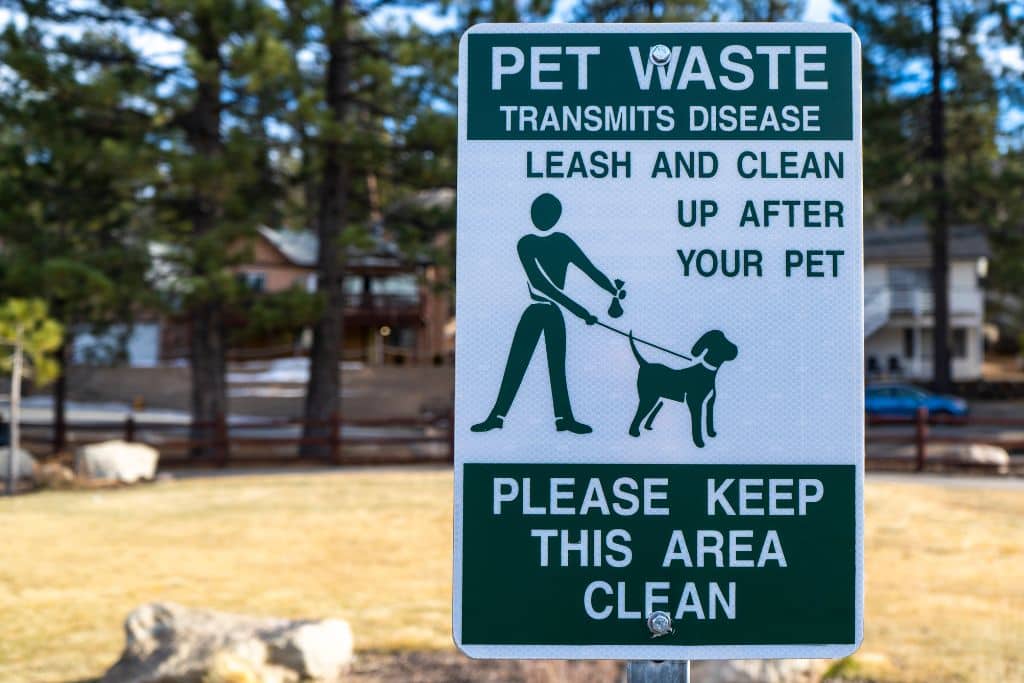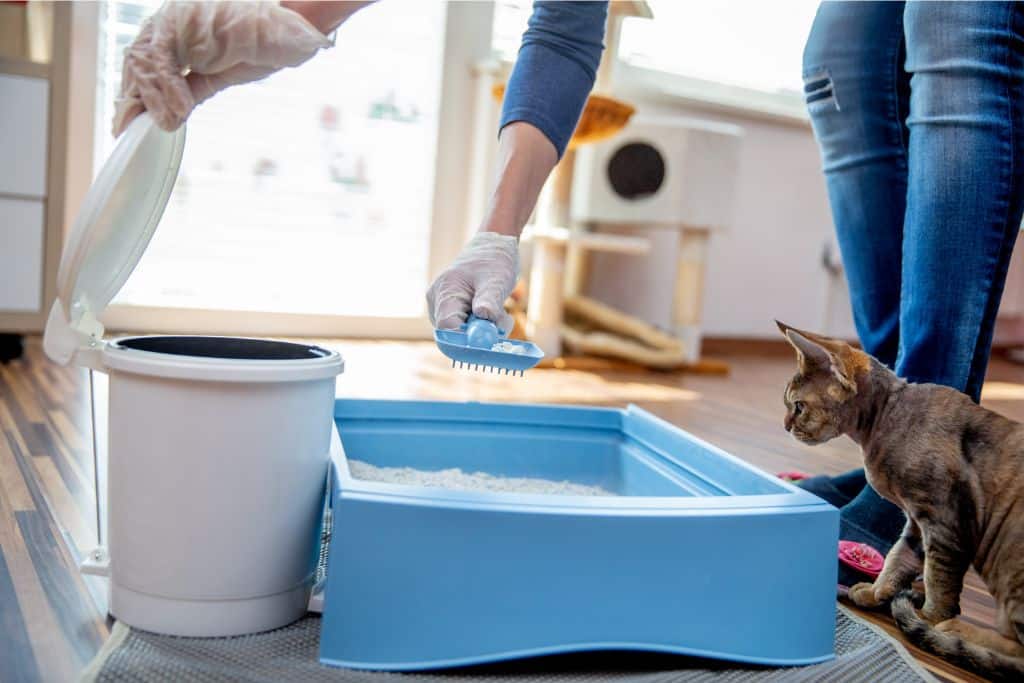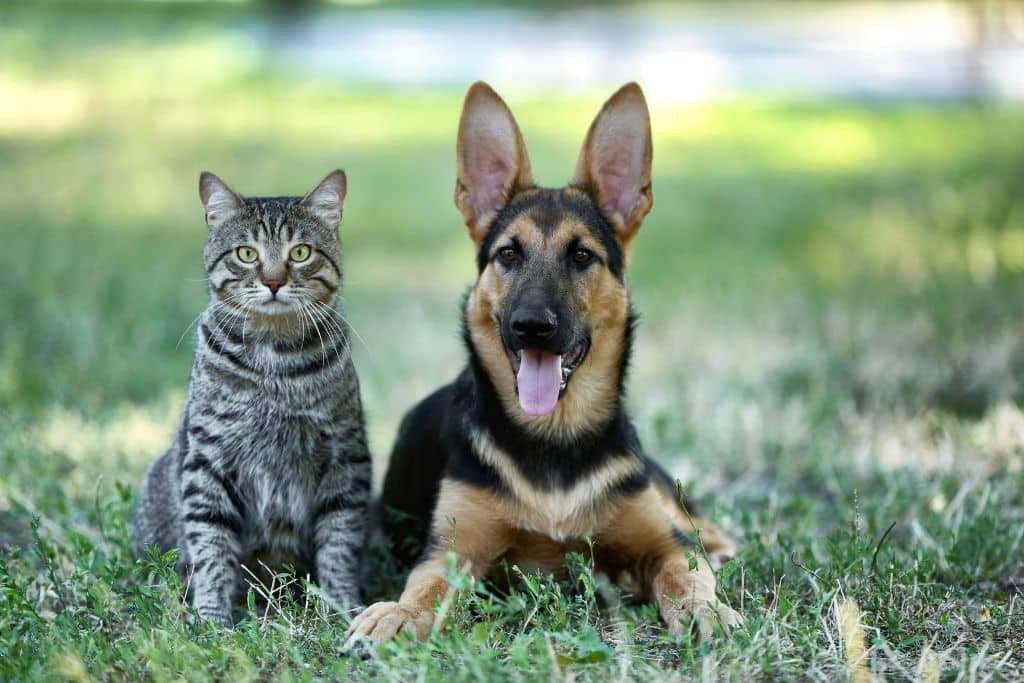Pet ownership is a staple in many families worldwide, and estimates suggest that over half of the global population have a pet at home. However, owning a dog, cat, or any other pet might not be as sustainable as many think. We take a look at the environmental impact of pets and explore solutions to make pet ownership a more sustainable practice.
—
Climate change affects everything and everyone, including companion animals. Heatwaves and rising infectious diseases from pathogens caused by climate change harm the pets we love so dearly – albeit in a much less significant way than most human activities and industries, the pet industry also partly contributes to increasing heatwaves and pathogens.
An average-sized cat can produce 310 kilograms (CO2e) annually. An average-sized dog generates 770 kg of CO2e, and an even bigger dog can emit upwards of 2,500 kilograms of CO2e, which is twice as much as the emissions deriving from an average family car per year.
Fortunately, raising a pet does not have to be environmentally harrowing for the planet, nor do we need to abandon societal’s fondness for owning a companion animal altogether. If we are already taking steps to become more sustainable in other industries like business and fashion, the pet industry (and ownership) can indeed follow suit.
Promote Sustainable Pet Food Consumption
The modern food system is responsible for 26% of global greenhouse gas emissions, with meat consumption alone accounting for about 60% of the total.
As mentioned before, pets account for a significant carbon footprint. According to Gregory Okin, a professor from the University of California Los Angeles, our pets’ meat consumption generates about 64 million tons of carbon dioxide annually in the US, the equivalent of driving 13.6 million cars.
In the US alone, our pets’ diet contributes to 25-30% of the environmental impact of meat consumption. Here, the amount of meat that only dogs and cats consume ranks just behind the total meat consumption of Russia, Brazil, the United States, and China.
“If Americans’ 163 million Fidos and Felixes comprised a separate country, their fluffy nation would rank fifth in global meat consumption,” Okin noted.

Meat accounts for nearly 60% of all greenhouse gases from food production.
So, what does all this mean? It is clear that the meat we feed our cats and dogs has a significant environmental impact. For this reason and in a climate change-ridden world, it is important to inform owners (and consumers) about the footprint of their pets and promote sustainable food consumption in the pet industry.
Sustainable Pet Food Alternatives
While there has yet to be a bigger boost of alternative pet food, sustainable options are on the rise.
Pet owners can choose pet food brands certified by the Aquaculture Stewardship Council or the Marine Stewardship Council. Food products with these certifications indicate that the protein in this food is caught legally and produced responsibly.
In the last five years, pet food products with sustainable seafood, verified by the Marine Stewardship Council, increased by 57% in the United Kingdom. In the United States, they increased by 614%.
While using fish as a protein source does have its environmental issues, a study from the Institute for Marine and Antarctic Studies at the University of Tasmania revealed that the carbon emitted from capturing most types of fish is much less than the carbon emitted from the production of red meat. Specifically, catching a kilogram of fish generates one to five kilograms of carbon, depending on the location, whereas producing a kilogram of red meat like beef and lamb generates between 50 to 750 kilograms of carbon – a substantial difference.
Insect-based pet food is another way to promote sustainability as the overall carbon footprint is much smaller than that of livestock. Indeed, insect-based pet food requires fewer resources, such as land, water, and transportation fuel.
You might also like: Insect Farming: The Sustainable Future of Food Production with FlyFarm
Another way to alleviate the environmental impact of the pet food industry as an owner is to simply feed your dog or cat less.
In 2022, the Association for Pet Obesity Prevention reported that 61% of cats and 59% of dogs were obese or overweight. This means that many owners feed their pets much more than necessary, inadvertently wasting resources and adding to the environmental impact of pet food. As an eco-conscious pet owner or wanting to become one, feeding your pet the right amount of food helps keep the planet healthy (and your pet, too).
Manage Pet Waste Properly
Rather not talked about, our dog’s and cat’s waste can, in fact, impact the environment.
With the 163 million dogs and cats owners in the US alone, the amount of faeces produced is not far off the amount of garbage produced by the population of the state of Massachusetts. To put things into perspective, 163 million dogs and cats generate a total of approximately 5.1 million tons of faeces annually, about the total waste generated by 6.63 million people.
Unfortunately, much of our dog’s waste is left on the ground. Specifically, 40% of pet owners do not clean up after their dogs. This is problematic. Dog waste comprises various viruses, bacteria, and parasites that are transmittable and can thus harm humans and other animals.

Street sign inviting dog owners to clean up their waste to avoid the spread of diseases.
Our dog’s waste can also harm the environment by contaminating soil and water bodies. According to the US Environmental Protection Agency (EPA), pet faeces contain bacteria, viruses, and nutrients categorised as “pollutants from urban runoff”. Pathogens from canine waste can remain in the soil for years and affect wildlife and vegetation. Nitrogen is also found in faeces, and, if washed into lakes or rivers, it can result in the growth of invasive algae that damage aquatic life.
As for cat waste, clay-based cat litter is not exactly sustainable, unable to break down in landfills. Simply put, it is not biodegradable. This type of litter is also not sourced in the greenest manner as it uses strip mining, a form of mining that entails removing vegetation, trees, rocks, and topsoil, to obtain clay. Removing the planet’s surface materials in such a manner leads to unrepairable damage to the mining site and environmental disruption such as erosion.
Silica-gel-based litter (or crystal litter) is not sustainable either. This form of litter is made from quartz, which is a non-renewable resource found through mining practices. Manufacturing silica-gel-based cat litter has a high carbon dioxide emission, as a single ton of silica gel needs about five tons of coal. Silica-gel-based cat litter has around ten times the carbon dioxide pressure than other litters.

Silica-gel-based litter is not biodegradable.
As someone who owns a companion animal, whether a dog or a cat, it is paramount to learn how to manage their waste properly to minimise the environmental impacts associated with it.
Owning a dog means picking up after them. This small act can lead to a huge milestone in becoming a more sustainable pet owner. Instead of plastic bags, use bags that are good for the planet, such as compostable ones. It is also important to keep in mind that bags that companies often label bags as “biodegradable” for marketing purposes to entice consumers to purchase, a practice infamously known as greenwashing.
Cat owners can also take more environmentally-friendly actions when managing cat waste, such as opting for litter boxes that are produced with sustainable materials. For instance, recycled paper, grass seed, and renewable wheat are all greener alternatives to clay-based and silica-gel-based litter, as these materials can easily break down in the environment.
Flushing cat litter down the toilet also causes more bad than good because it can damage septic systems and sewer lines. At times, cat waste can carry a parasite, toxoplasma gondii, which can spread into streams, lakes, and water supplies, subsequently affecting wildlife and even humans. So, make sure to dispose of your cat’s litter box properly.
Choose Eco-Conscious Pet Supplies
Having a pet necessitates purchasing supplies such as toys, bedding, food, and grooming products. Ever thought about the sustainability level of these supplies? How eco-conscious are these companies?
Pet products generate approximately 300 million pounds of plastic waste in North America alone, crowding landfills with these environmentally damaging components. Landfills are filled with dog and cat toys as many are non-recyclable, as they are entirely made up of or contain some sort of plastic material.
The plastic used for pet food packaging is just as bad as the plastic used for pet toys. According to the Pet Sustainability Coalition, “99% of all pet food & treat packaging goes to the landfill each year.” Shocking, yet this is reality.
As society is working profusely to lessen the use of plastic and establish more sustainable businesses, companies producing pet products must do the same and pet owners must be more eco-conscious.
The Pet Sustainability Coalition, committed to building a more sustainable pet industry, launched a campaign called The Packaging Pledge, which supports companies in the pet industry to gradually transition to “100% recyclable, reusable, or compostable packaging by 2025.” Some companies that have already signed this pledge are Open Farm, Primal Pet Foods, and Stella and Chewy’s.
Besides the Pet Sustainability Coalition, rePurpose Global is another organisation that strives to create a greener world as it focuses on reducing plastic waste. So far, a total of 20 pet companies, such as Earth Animal, Four Leaf Rover, and Nature’s Logic, have partnered with rePurpose Global. The partnership has already proven successful and helped recover 2,000 tons of plastic waste, the equivalent of about 111 million plastic bottles.
As a pet owner, opting for environmentally-friendly pet products is an effortless way to become a more sustainable owner. Buying toys for your cat or dog means choosing ones assembled from “natural, sustainable and biodegradable materials,” as the David Suzuki Foundation puts it. Along with purchasing clean and green toys, pet owners can also build toys using household items – ensuring these homemade toys are safe for them.
Final Thoughts
With companion pet ownership being so widespread, owners should take into account the environmental impact of their pets, especially when the climate crisis keeps worsening by the day. Although it may appear so, it is not as difficult to direct how you care for your dog or cat in a more planet-friendly manner. Choosing sustainable pet products from genuinely eco-friendly brands can make a world of difference in reducing the pet industry’s carbon footprint.
You might also like: Are Humans an Invasive Species?


















